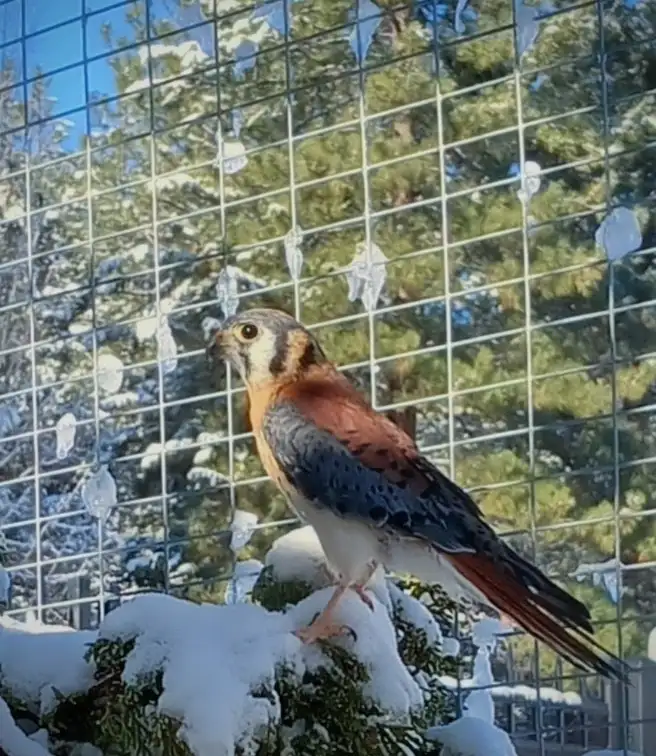
Raccoons at the Zoo
Vincent and Tosh – came in 2011 although they are not related. Vincent had been attacked by someone’s dog when he was very young. They kept him for several weeks and by the time we got him, he was already imprinted. Tosh was also raised from a very young age. Tosh and Vincent are animal ambassadors and are often used for programs. The other raccoons can be seen playing on exhibit every day and they do have a lot of energy! They are often given behavioral enrichment to keep them busy since they are so intelligent.
Karen – Arrived at the zoo in 2017, was previously kept as an illegal pet.
Bowie – Brought to us in 2021, he is a blonde raccoon, a rare coloration preventing him from thriving out in the wild.
Description
(Procyon lotor) Raccoons are plantigrade animals, walking on the entirety of their foot – heel to toe. Bear and humans do this as well. Raccoons are highly intelligent and have a manual dexterity that comes close to that of apes. Their long delicate fingers easily open trash cans and doors.
What does the Raccoon eat?
They are true omnivores and are opportunistic in their diet. They will eat fruit, fish, insects, berries, nuts, eggs, small rodents, grapes, corn, crabs, crayfish and anything edible you may have left in the backyard. It was once thought that raccoons washed their food. They do not. Raccoons have a highly sensitive sense of touch which water helps to enhance. Even when water is unavailable, raccoons will use the same motions while they manipulate their food or objects they are interested in. This tactile experience gives the raccoon a better sense of what it will be eating. It is as if they “see” with their hands.
How long do they live?
Raccoons can live for 15 years, but most only live to be 5 or 6.
How many Raccoons can be born at a time?
Raccoon kits (usually 3 – 6 of them) are born 2 months after mating. They are weaned by 8 weeks, and soon after will go on foraging trips with their mother.
Where are they found?
Native to North and South America with a range that extends from southern Canada to the northern reaches of Argentina.
Interesting facts:
- Raccoons are plantigrade animals, walking on the entirety of their foot – heel to toe. Bear and humans do this as well.
- Raccoons are highly intelligent and have a manual dexterity that comes close to that of apes. Their long delicate fingers easily open clam shells, trash cans and doors.
- The largest raccoon on record weighed over 60lbs.


